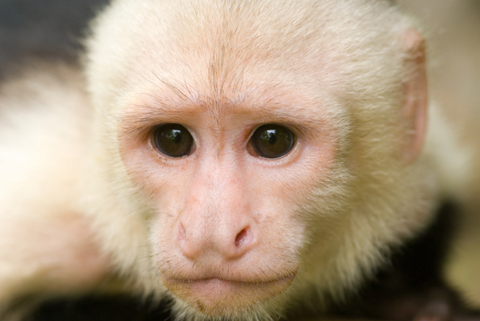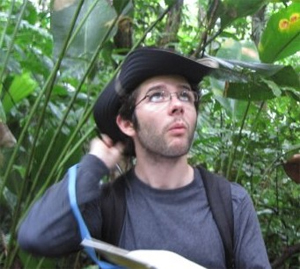Why does the Capuchin monkey need an extended childhood before it’s ready to become an adult?
Ohio University alum Morgan Chancey ’10 is going to Costa Rica to study the monkeys and look for the answer by studying the skills they need as adults.
But first he’s kick-starting his fund raising with an online campaign. He has just seven days left to reach his next goal.
Learning to Live, or Living to Learn?
“What’s so great about being a juvenile monkey? Capuchin monkeys spend a much longer time than they should as juveniles, a life-stage where the animal is in limbo between weaning and complete maturity. By focusing on how rapidly (or slowly) juvenile white-faced capuchins acquire the skills they will need as adults, I hope to better understand the pressures that have led to the evolution of an extended juvenile period in this species,” Chancey says on his website.
After earning a B.A. in Anthropology from Ohio University’s College of Arts & Sciences, Chancey taught middle-school science in Wheatley, AK, for two years. Now he’s pursuing an M.A. in Anthropology at Kent State University.
“During this time, I really fell in love with science as a method (and a worldview) while also ending up astounded at the behavior of my young students,” he says. “So, I figured I would combine these two sentiments and return to school to carry out behavioral research on primates! Now, as a newcomer to the field of primatology, I am focusing on evolutionary questions around why we and our primate relatives are young for so long in the first place.
“Prior studies would indicate that juveniles of this species attain adult-like foraging skills early in juvenility, while other primate taxa show developmental sequences or trends in such skills,” he explains. “More specifically, developmental trends for the consumption of palm nuts have been observed in a closely related species of monkeys, yet this question remains unaddressed in my study species. If funded, my study will address this gap in our knowledge, contributing to our understanding of developmental trends in foraging skills—an area that is poorly understood with regard to capuchins. This knowledge is essential in discussions of the evolution of an extended juvenile period, a trait that distinguishes capuchins, as well as humans and the great apes, among primates.
“White-faced capuchins (Cebus capucinus) and their close relatives are oddballs among the New World monkeys for the long periods of their lives they spend as juveniles, a time after complete weaning but before full sexual maturity. Seen from an evolutionary perspective, such a delay in sexual maturity must be accompanied by some benefit later in life, and one such benefit may lie in learning necessary foraging behaviors.”
Read more about his research project at Learning to Live, or Living to Learn?




















Comments